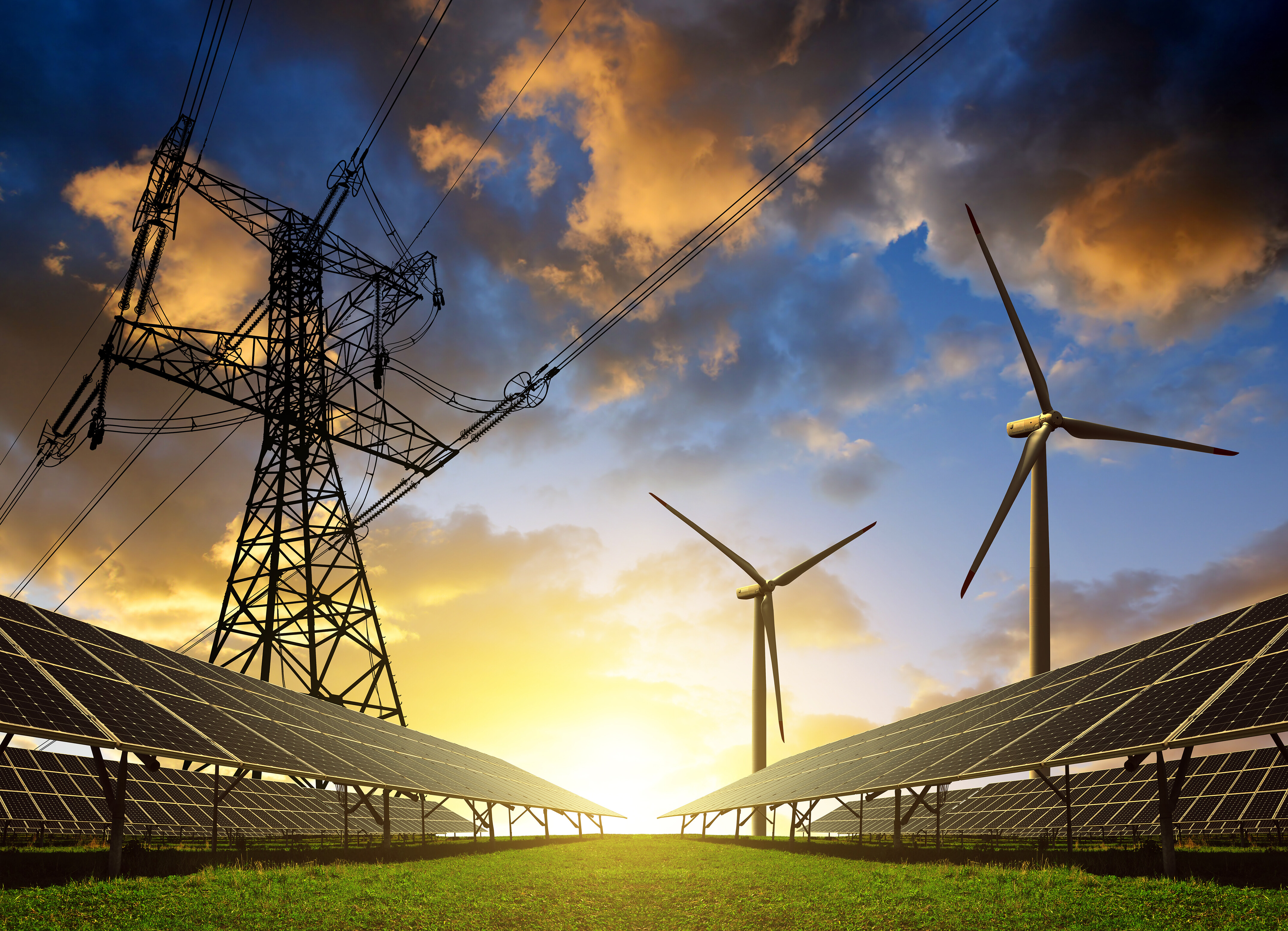Why a multistakeholder approach is essential to our risk resiliency

A multilateral approach is the best way to tackle all the risks we face – from climate change to cybersecurity. Image: REUTERS/Kevin Lamarque - RC1B8EAD4E50
While there is profound opportunity to be captured in the new era of the Fourth Industrial Revolution, there will also be immense disruption across industries. For instance, in a little over a decade, as much as 14% of the global workforce may need to switch occupations because of automation. At the same time, many individuals are dissatisfied with the current global system, seeing few perceptible gains. According to the 2019 Edelman Trust Barometer, only one in five people feel the "system" is working for them.
These drivers — technological disruption and a scepticism towards the global system — are shaping today’s risk horizon, which consists of three primary risks: one near-term, one long-term and one that contains blind spots for stakeholders.
In the immediate term, tensions are growing at a geo-economic level. Once-strong market unions are fraying and global trade is not only declining but is being used as a weapon rather than a tool for joint prosperity. We may have further to go along this trajectory: according to the World Economic Forum’s Global Risks Perception Survey of 916 experts, policymakers and members of the non-profit community, 91% of respondents believe that economic confrontations/frictions will increase in 2019 between major powers.
This geo-economic divide is having consequences. Trade tensions between the United States and China are projected to cost the global economy $430 billion in lost gross domestic product. In January 2019, partly due to growing trade disputes, the International Monetary Fund revised downward its projections for growth — its second downward revision within three months. "An escalation of trade tensions beyond those already incorporated in the forecast remains a key source of risk to the outlook,” the IMF said.
While geo-economic division is an immediate risk facing stakeholders, in the long-term, environmental degradation is the primary risk to business and society. According to the Global Risks Perception Survey, the top three risks over the coming decade are climate related: extreme weather events, failure of climate-change mitigation and adaptation and natural disasters. This marked the third year in a row that the World Economic Forum survey ranked “extreme weather events” as the leading and most likely risk to materialize over the next 10 years.
It should come as no surprise that climate-related issues dominated the World Economic Forum’s long-term risk ranking, as we are already starting to feel the effects of climate change. Last year was the fourth warmest on record, and extreme weather events rolled across Europe and the USA. But the risk of climate change will soon move from episodic to existential.
While geo-economic and climate risks have the potential to bring significant economic and social costs, the contours of these two risks are more readily understood than a third risk stakeholders must address: technology. According to the Global Risks Perception Survey, respondents ranked cyber-related issues within the top five risks in both the short- and long-term: 82% of respondents believe the theft of data or money would increase in 2019, and 80% expect disruptions of operations and infrastructure to multiply this year. At the same time, data fraud or theft and cyberattacks were ranked as the fourth- and fifth-leading risks, respectively, in terms of likelihood — behind the three associated with climate change — in the coming decade.
And yet the true potential impact of technological risks may extend even further. Artificial intelligence is becoming ever more sophisticated, with the potential to amplify existing hazards and create new ones. Meanwhile, advances in biotechnology are making it frighteningly easy to manufacture and deliver new threats because the equipment needed to synthesize DNA is becoming more affordable and accessible.
The lack of faith in the “system” has meant that the notion of “taking back control” — including from multilateral organizations — has gained currency in recent years among citizens and leaders alike. The danger in this development is that scepticism over the value of geostrategic institutions, and even of multilateralism itself, risks eroding the global community’s ability to properly manage the primary economic, environmental and technological risks facing the world today.
One lesson from the 2008 financial crisis was not only that countries’ financial systems were inextricably linked, but that multilateral collaboration was crucial for preventing further harm and moving the global economy towards recovery. In the weeks following the collapse of Lehman Brothers, central banks across the world lowered their interest rates simultaneously. The following year, the G20 released a “Framework for Strong, Sustainable and Balanced Growth.” These, and other, measures helped stave off a global depression.
Yet given the growing geo-economic tensions, will the global community be willing to act in concert when the next shock hits?
Similarly, we are seeing the dangers of fraying multilateral coordination when it comes to climate change. In only a few years since the signing of the Paris Agreement in 2016, cracks have already emerged among signatories as critical countries reject the agreement outright or fail to meet the targets, even though more ambitious - and coordinated - action than ever is needed to stem global warming.
When it comes to technology, a go-it-alone approach will mitigate neither cyber nor other technology-related risks. According to a study in the Journal of Cybersecurity, “very little thought and work has tried to understand how disparate stakeholders can impact the coordination of response in the event of a cyber assault across public and private interests, perpetrated by either a nation state or another technically adept adversary.”
Though cracks are emerging in the global multilateral system, there are models of risk governance that offer promise.
In Colombia, a multistakeholder approach is being used to strengthen the country’s approach to risk-management relating to trade. The Global Alliance for Trade Facilitation — a collaboration of international organizations, governments and businesses that includes the World Economic Forum — is working with the private sector and Colombia’s National Food and Drug Surveillance Institute (INVIMA) to introduce a modern risk-management system.
Friends of Climate Action — an initiative managed by the World Economic Forum — is an example of a multistakeholder approach to risk-mitigation on climate change. By serving as a platform for a range of entities, including businesses, investors and civil society, the initiative is promoting the development of collaborative efforts to deliver increasingly ambitious action to fight climate change.
And on cybersecurity, numerous multistakeholder initiatives are working to coordinate efforts to mitigate risk. For instance, entities such as the Financial Services Information Sharing and Analysis Center (FS-ISAC) — which works with the US government and shares threat assessments with its member financial companies — illustrate the benefits of public-private collaboration. FS-ISAC not only alerts members near-simultaneously to threats, it offers recommended solutions.
These multistakeholder approaches are powerful because they can strengthen preventative and responsive measures by aligning resources and creating efficiencies of scale. Stakeholders no longer have to stand alone in a complex risk environment, replicating resiliency efforts and using resources inefficiently. Instead, they can develop a common protocol that increases response capacities. Varied views can also help an organization reduce confirmation bias and other behaviours that distort landscape assessment and decision-making.
Institutionalizing a multistakeholder approach to risk governance addresses the broader problem of a risk-response divergence emerging. As risks continue to grow and become more complex — and in need of coordinated solutions from all stakeholders — it will be increasingly difficult to prepare for, and avert them, alone.
This piece is an abridged version of: Børge Brende, "A multistakeholder approach to risk resiliency" (2019), Journal of Risk Management in Financial Institutions, Vol 12, No 3, pp. 223–231.
Don't miss any update on this topic
Create a free account and access your personalized content collection with our latest publications and analyses.
License and Republishing
World Economic Forum articles may be republished in accordance with the Creative Commons Attribution-NonCommercial-NoDerivatives 4.0 International Public License, and in accordance with our Terms of Use.
The views expressed in this article are those of the author alone and not the World Economic Forum.
Stay up to date:
Global Risks
Related topics:
Forum Stories newsletter
Bringing you weekly curated insights and analysis on the global issues that matter.
More on Global RisksSee all
Allison Shapira
November 14, 2025








